The Polaris PSF 4012 floor fan is a fairly standard but attractive model. It is equipped with horizontal and vertical rotation of the motor unit, as well as a remote control and a number of other interesting features that we will talk about during our testing.
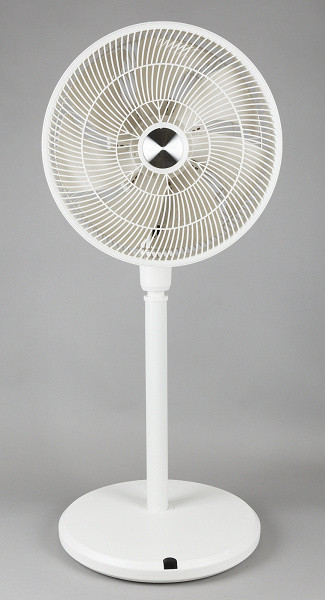
Characteristics
| Manufacturer | Polaris |
|---|---|
| Model | PSF 4012 |
| Type | floor axial fan |
| Country of origin | China |
| Guarantee | 3 years |
| Service life * | 3 years |
| Power | 35 W |
| Blade diameter | 40 cm |
| Noise level | not specified |
| Rotation speed | not specified |
| Number of speeds | 12 |
| Number of modes | 3 |
| Rotation | horizontal rotation 60/100 degrees, vertical rotation 60/120 degrees |
| Remote control | IR remote control |
| Weight | 5.4 kg |
| Dimensions (W×H×D) | 400×110×400 mm |
| Length of network cable | 1.8 m |
* Contrary to popular belief, this is not a period after which the device will necessarily break down. However, after this period, the manufacturer ceases to bear any responsibility for its functionality and has the right to refuse to repair it, even for a fee.
Equipment
The fan comes in a flat, good quality cardboard box. The design is made in the Polaris corporate style: a blue background on which the device itself is depicted, and the key characteristics of the model are listed.
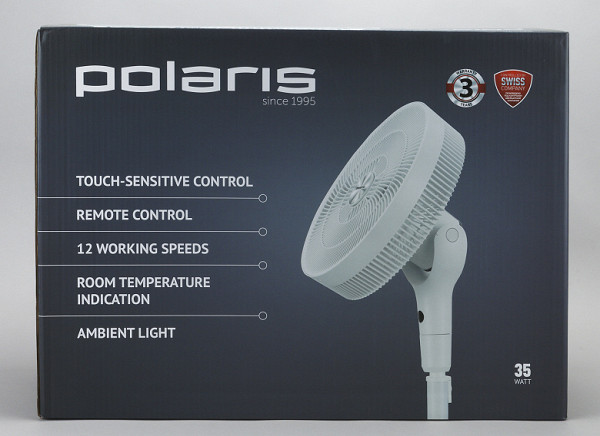
Inside the box we found a disassembled fan, a remote control with a battery installed, a user manual and a warranty card.
At first glance
Like most axial fans, the Polaris PSF 4012 is supplied unassembled. Assembly is simple and will not take more than five minutes; all you need is a Phillips screwdriver.
Now let's take a closer look at this model and its characteristic features.
The fan consists of several main parts: a stand, a vertical rod, a motor unit and rotating blades with a protective grill.
The base (stand) is a heavy metal «pancake» in a plastic case. On the top there is a connector for installing the central rod, and in the front there is an infrared receiver that will receive a signal from the remote control.
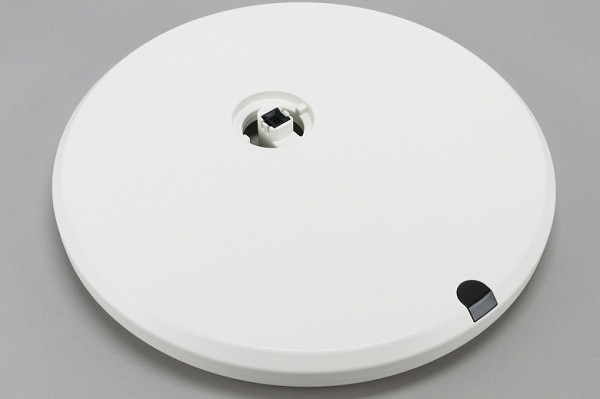
At the bottom are anti-slip feet and a place for attaching the rod (here it is fixed with a plastic nut).
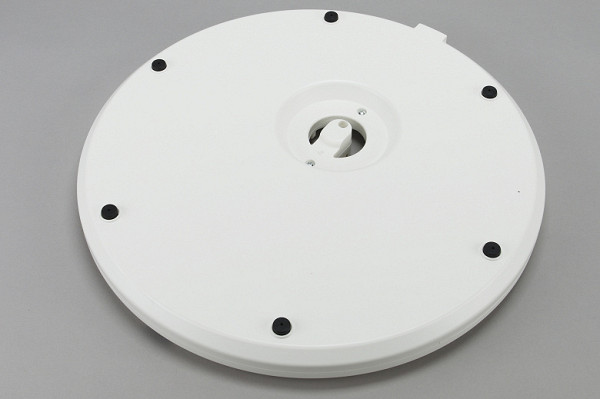
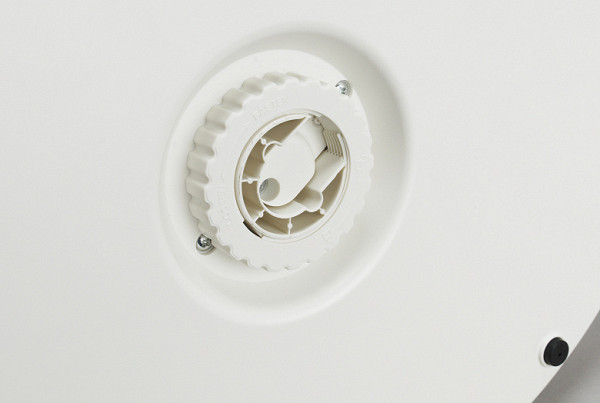
The power cord connects to the base at the back. There is no space for winding excess cord.
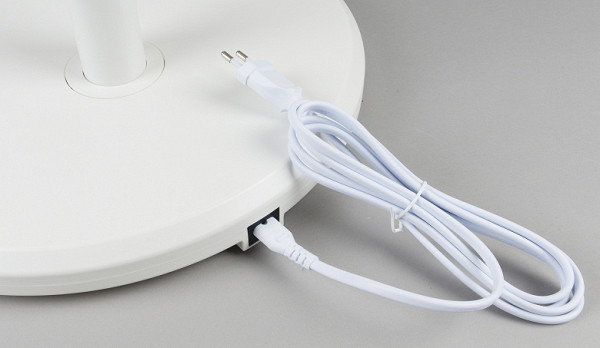
The next element is the vertical rod. This fan has a telescopic rod, which allows you to adjust the height from 75 to about 93 cm (measured from the floor to the center of the blades).

The lower part of the rod is metal, the upper (retractable) part is plastic.
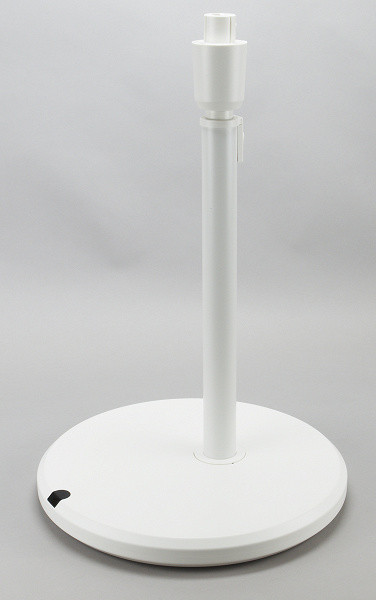
The height adjustment is done by pressing a small button. There is a spring inside the rod, so it is manually extended to fold, and automatically returns when you press the button. However, the spring force is not enough to fully unfold, so you will need to use your hands.
The locking system works in one direction, allowing you to fold the rod without pressing a button.
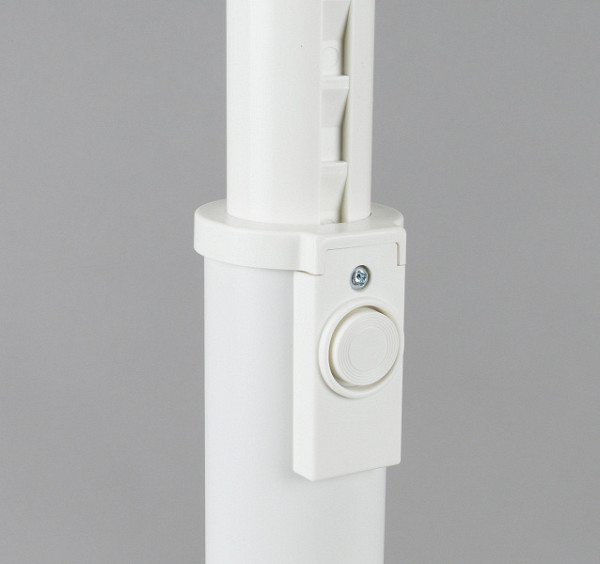
The main part of the device is the motor unit with a rotation mechanism. It is attached to the rod with a simple latch and removed by pressing a button.
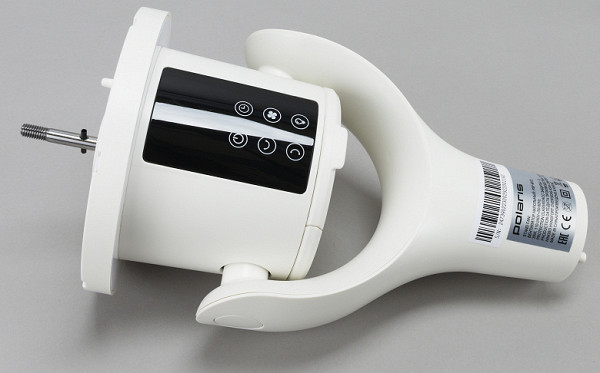
On the motor block is a control panel that includes touch buttons and LED indicators. We will discuss it in more detail in the «Control» section. At the base are stickers with a barcode and the main characteristics of the model.
Finally, the final element is the blades and protective cover. This fan has 7 plastic blades.
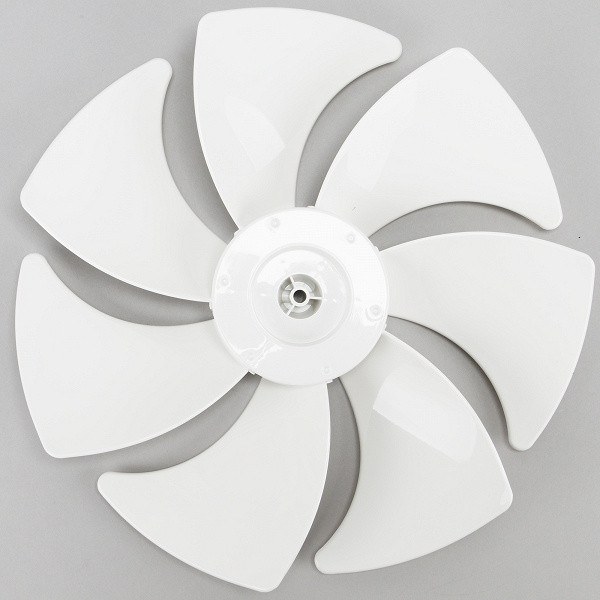
The protective cover (grill) is also plastic. To disassemble the cover (it consists of two parts), we will need to use a Phillips screwdriver and remove the fixing screw.
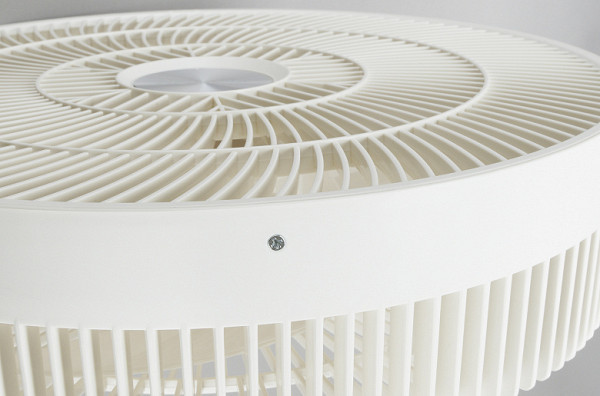
After this, you need to turn one part of the casing relative to the other by several degrees.
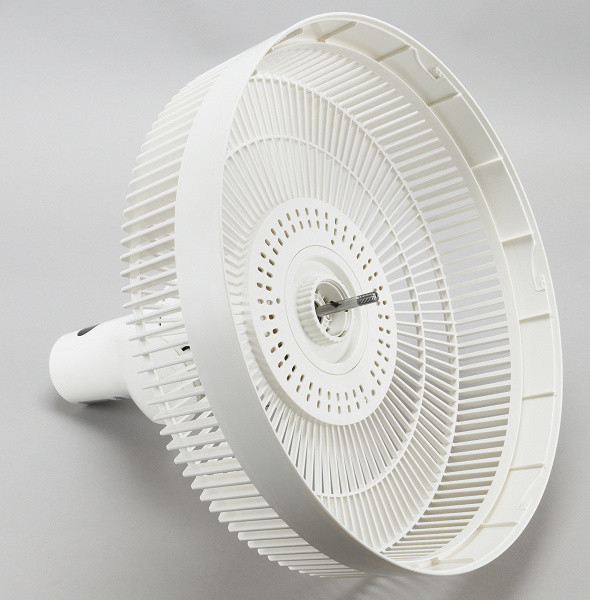
The blades are secured in place with a plastic nut (it is screwed counterclockwise).
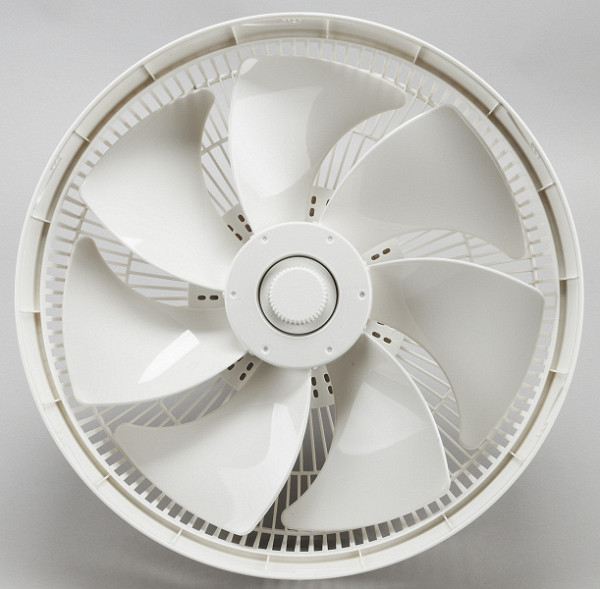
After this, it remains to return the front part of the grille to its place, in the center of which there is a round plastic cover with the Polaris logo...
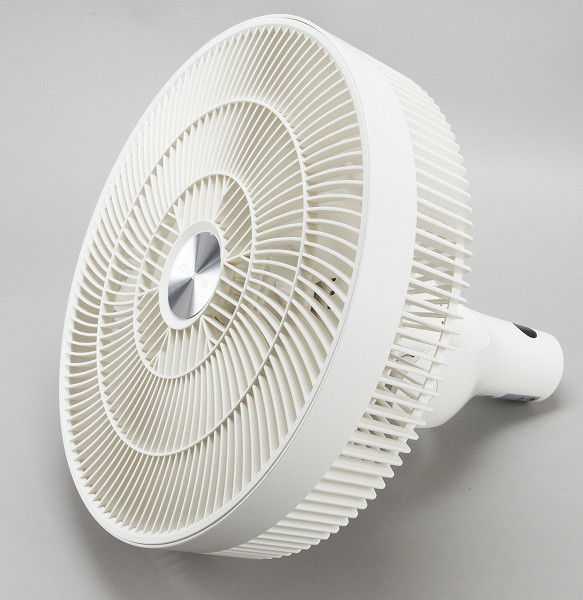
...and install the motor block with blades on the stand.
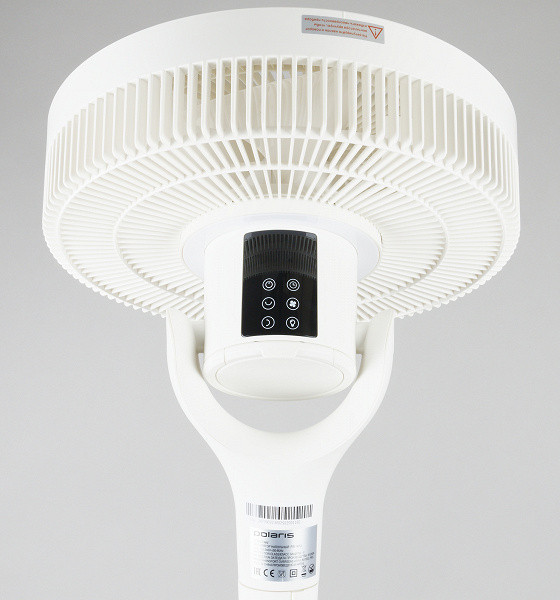
At first we didn't notice the backlight: there is a hidden LED night light on the back of the motor block. This was again a pleasant and unexpected surprise!
This is what the fan looks like after assembly is complete.
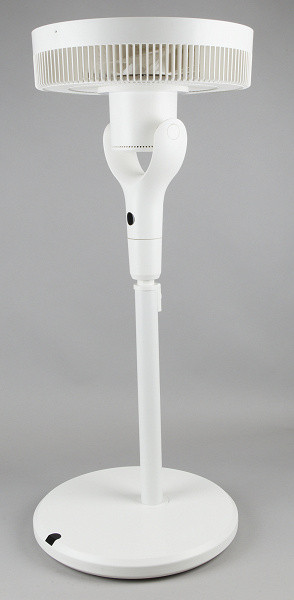
Already at the assembly stage, we noticed several interesting features. Firstly, the infrared receiver is located on the base of the device, which is not so common. Secondly, the base, rod and motor unit are equipped with automatically connecting electrical connectors, which is convenient — there is no need to connect additional wires.
In addition, we immediately noted that the motor unit is capable of rotating both vertically and horizontally.
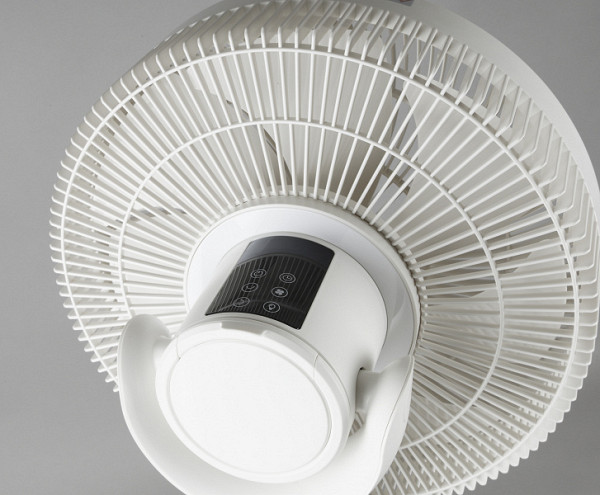
Overall, the fan design is fairly standard, but it stands out both for its design and for some unusual technical solutions.
The overall impression from getting to know the device is excellent: the plastic is of high quality, and the appearance is stylish and attractive. We hope that the device will not disappoint us during testing.
The fan comes with a compact infrared remote control.
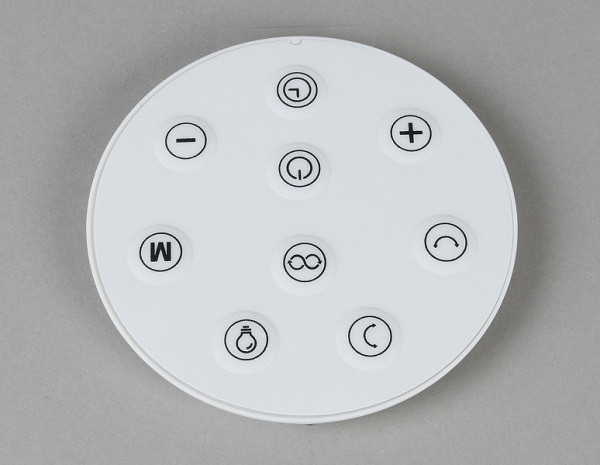
The manufacturer also decided not to follow the traditional path and did not include a standard remote control, showing originality. We have a round remote control with a CR2032 battery already installed. The most amazing thing is that it is magnetic, which allows you to attach it to any metal surface, be it a table lamp, a refrigerator, a computer case or even the fan rod itself, so as not to lose it.
Instructions
The user manual is made in the form of a compact brochure on glossy white paper. The Russian version takes up 11 pages. The printing quality is high, although the images could be a little clearer.
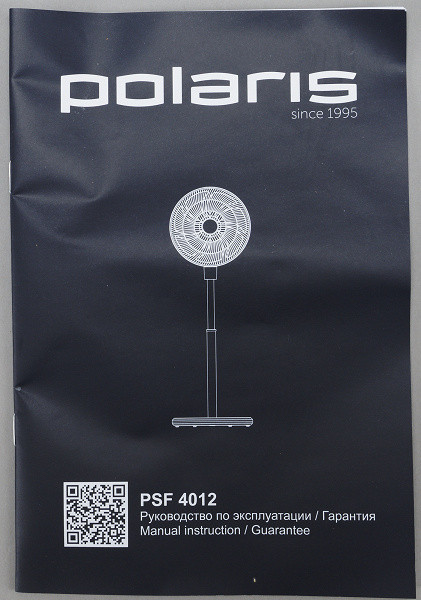
The manual is written in an accessible and clear language, which makes it easy to understand both the assembly rules of the device and its daily use. In addition, it contains information on safety measures during operation, as well as detailed recommendations for the care and storage of the fan.
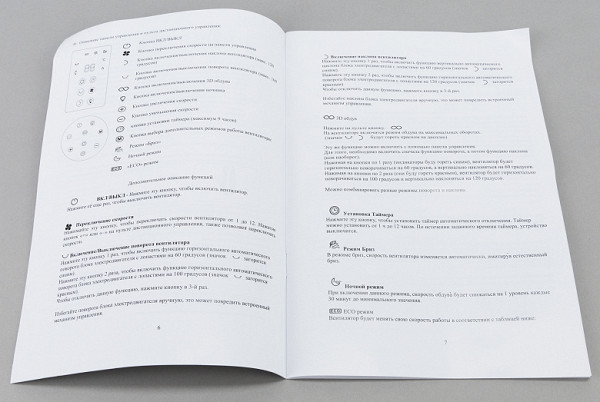
The brochure concludes with information on the technical specifications, equipment and correct disposal of the equipment.
Control
Our fan is controlled by six touch buttons located on the motor unit. Next to the buttons are LED indicators that show the selected operating mode. When the device is turned on, the display shows the current room temperature.
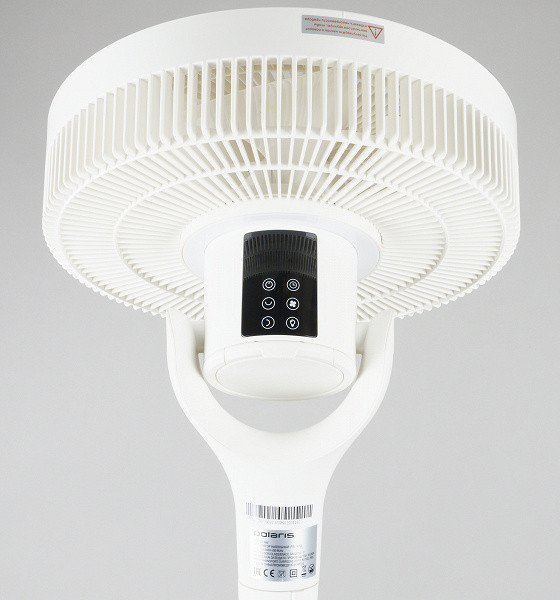
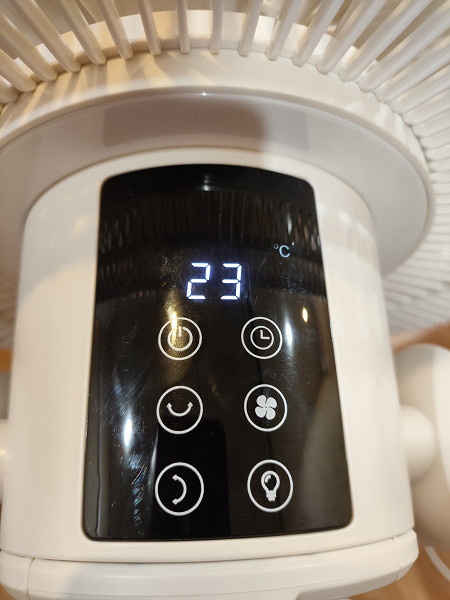
The purpose of most of the buttons is intuitive, but some of them require additional explanation:
- Turn the device on and off.
- Set the timer (up to 12 hours with an interval of 1 hour).
- Turn the horizontal rotation of the fan on and off: one press — rotates by 60 degrees, double — by 100 degrees, third — turns off the rotation.
- Turn the tilt of the fan on and off: one press — tilts by 60 degrees, double — by 120 degrees, third — turns off the tilt.
- Switch speeds (from 1 to 12).
- Turn the night light on/off (two brightness levels).
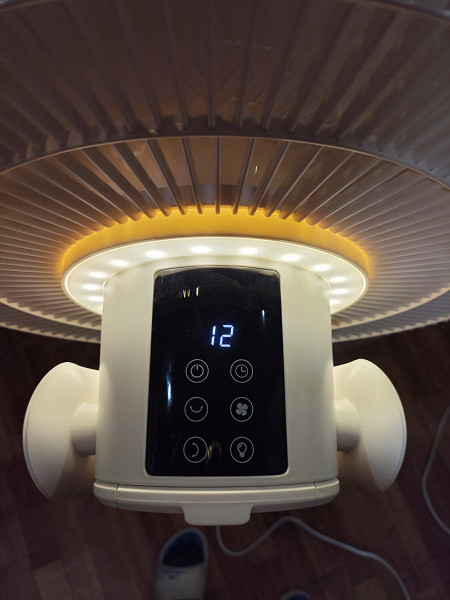
Pressing the buttons is accompanied by a quiet sound signal. The display next to the buttons, in addition to the air temperature, shows the selected blade speed mode, as well as rotation indicators (red or blue arrows), a timer indicator and a special mode indicator.
As for the mode in which horizontal and vertical rotation are simultaneously activated, it is better to see it in action than to describe it for a long time. We have some doubts about the practical benefits of such blowing, but this can be an interesting reason for praise in front of guests. 😉
When the fan is switched off, it “parks”, i.e. returns to its original state – the blades are located perpendicular to the floor plane, the motor unit “looks” forward.
Remote control
The buttons on the remote control basically duplicate the functions available on the fan body, with minor differences:
- The speed can be adjusted using the "+" and "-" buttons, while on the body the switching occurs cyclically, only in the direction of increase.
- The «3D blowing» mode allows you to activate or deactivate vertical and horizontal rotation at the same time with one click.
- The additional mode selection button allows you to turn on one of the special modes.
Our fan has three special modes:
- Breeze mode — the fan will vary the speed, simulating a natural wind.
- Night mode — the blowing speed will decrease by 1 level every 30 minutes until it reaches the minimum value. In our opinion, this is a very useful function that we have not encountered before.
- Eco mode — the fan will adapt its operating speed depending on the room temperature.
| Air temperature, °C | up to 22 | 23-25 | 26-28 | 29-31 | 32 and more |
|---|---|---|---|---|---|
| Blowing speed | 1 | 3 | 5 | 9 | 12 |
This mode is really useful and necessary. It's a bit of a pity that the countdown and mode changes start from 22 degrees. However, if you install the fan on the loggia facing the sunny side, then even in our not very hot climate you can easily see 30 or even 35 degrees on the thermometer.
Operation
Before using the fan, you need to fully assemble it. As already mentioned, it is not difficult and does not take much time.
The battery is already installed in the remote control, so you will not have to run around buying it.
During practical testing of the Polaris PSF 4012, we made sure that everything works as it should: the modes are easy to select and switch, and the controls are intuitive. The only thing that confused us a little was the lack of a mode selection button on the device body — it is only on the remote control. However, we have already encountered such a practice with other fans and assume that there may be reasons for this.
As for our impressions of operation, the speed modes turned out to be comfortable. The presence of 12 speeds allows you to choose the most suitable power level depending on the situation.
We found the additional modes useful. Instead of several ineffective programs simulating wind of varying strength, the manufacturer offered really interesting functions — a gradual decrease in power for comfortable sleep and automatic adjustment of the blowing intensity depending on the room temperature.
The night light located on the back panel has two brightness modes and shines with a pleasant warm yellow light — a great solution for a night light!
As for the noise level, in our opinion, the device works quite quietly. The sound signals (squeaks) heard when pressing the buttons do not cause irritation.
Care
It is not recommended to use steam jets to clean any part of the device. Also, do not use cleaning agents containing chlorine, ammonia or bleach. Avoid abrasive and corrosive agents such as powders, stain removers, metal sponges and scrapers.
The fan housing cannot be immersed in water or washed in a dishwasher.
In general, a slightly damp cloth, mild detergent and a vacuum cleaner (in blowing mode) to remove dust from the internal parts of the fan are allowed for cleaning.
Our measurements
The fan power consumption and noise level depend on the selected operating mode. We measured the parameters for minimum, medium and maximum speed. The background noise level during the measurements was 34 dB(A).
| Rotation speed | 1 | 6 | 12 |
|---|---|---|---|
| Power, W | 3.9 | 9 | 23 |
| Noise, dB(A) | 35 | 42 | 50 |
In standby mode, the fan consumes about 0.8 W. The night light will consume 3.3 W or 5 W depending on the power setting. The maximum recorded power was 34 W (at maximum speed, active case rotation and the night light on).
Now let's look at the different operating modes and measure the maximum air flow rate.
| Rotation speed | 1 | 6 | 12 |
|---|---|---|---|
| Air flow velocity at a distance of 1 m (m/s) | 1,2 | 1.8 | 3.0 |
| Maximum air flow velocity at the fan grille (m/s) | 2.1 | 3.6 | 5.5 |
To roughly estimate the maximum performance of the device, we used an anemometer, installing its impeller close to the fan grille and taking measurements at sixteen points. The average flow rate at the grille was 5.2 m/s. With a blade diameter of 350 mm, this corresponds to a maximum air flow of 30.1 cubic meters per minute.
Conclusions
The Polaris PSF 4012 fan, although it has a fairly traditional design, has a number of features that make it stand out from the crowd of similar devices. It offers several speeds, a “natural wind” mode, the ability to rotate on two axes and a remote control. It seems that there is nothing more to add here!
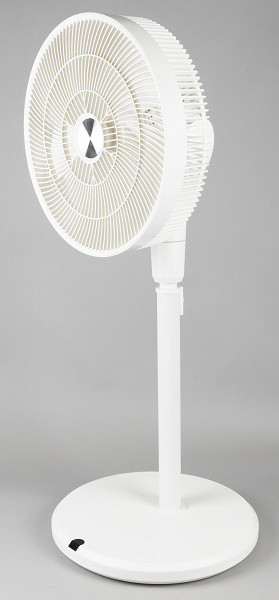
However, the developers did not stop there and added several original modes: a smooth reduction in rotation power, which will be useful for those who are going to bed, automatic speed control depending on the temperature, as well as a night light with two brightness levels. In combination with wide angles of rotation of the motor unit (up to 100 ° horizontally and up to 120 ° vertically, which allows you to direct the air flow vertically upwards), this makes this model unique to a certain extent.
Pros:
- easy operation
- magnetic remote control
- automatic shutdown timer
- power attenuation mode
- power change mode depending on temperature
- night light
- low noise level
Cons:
- none found
